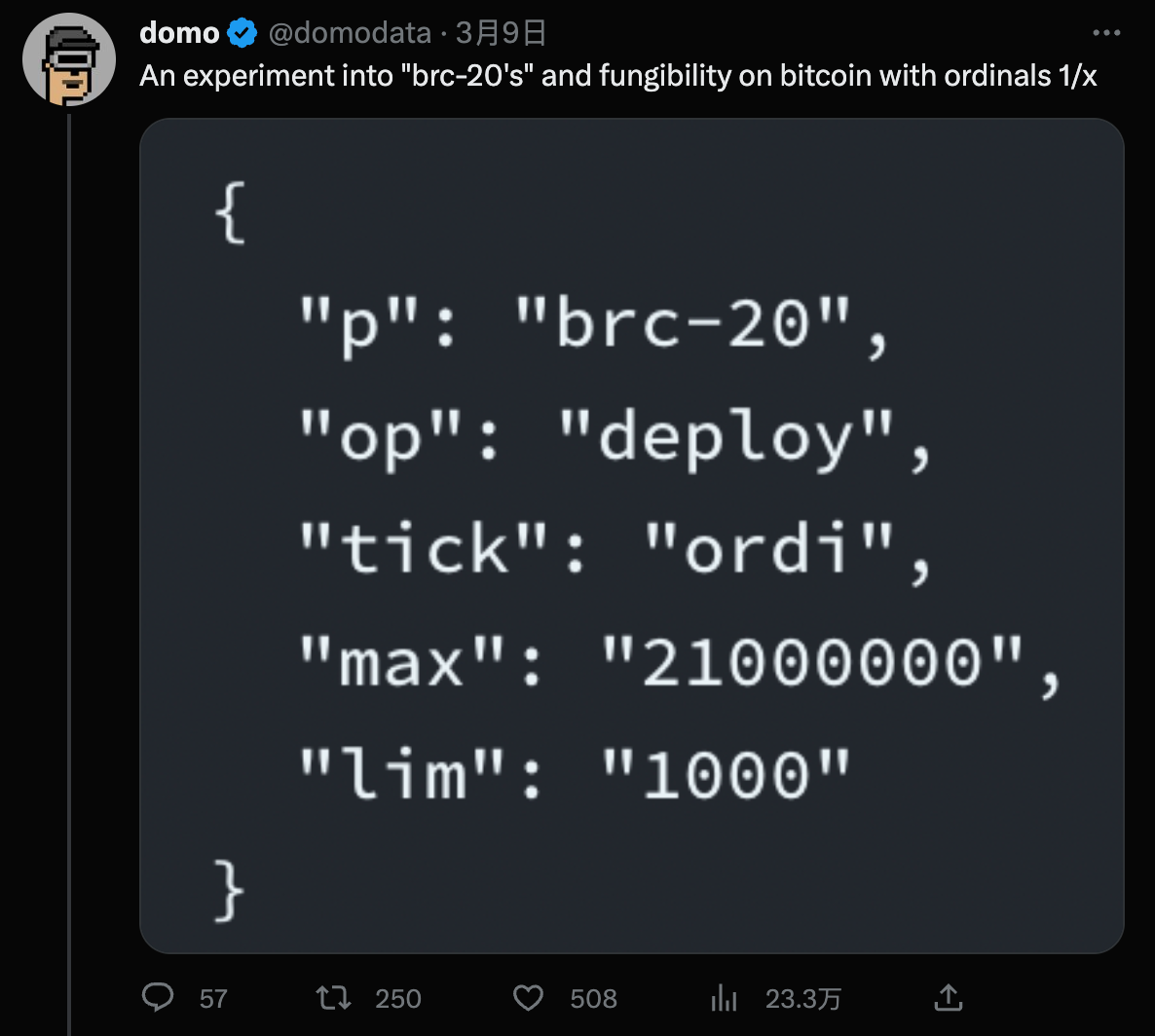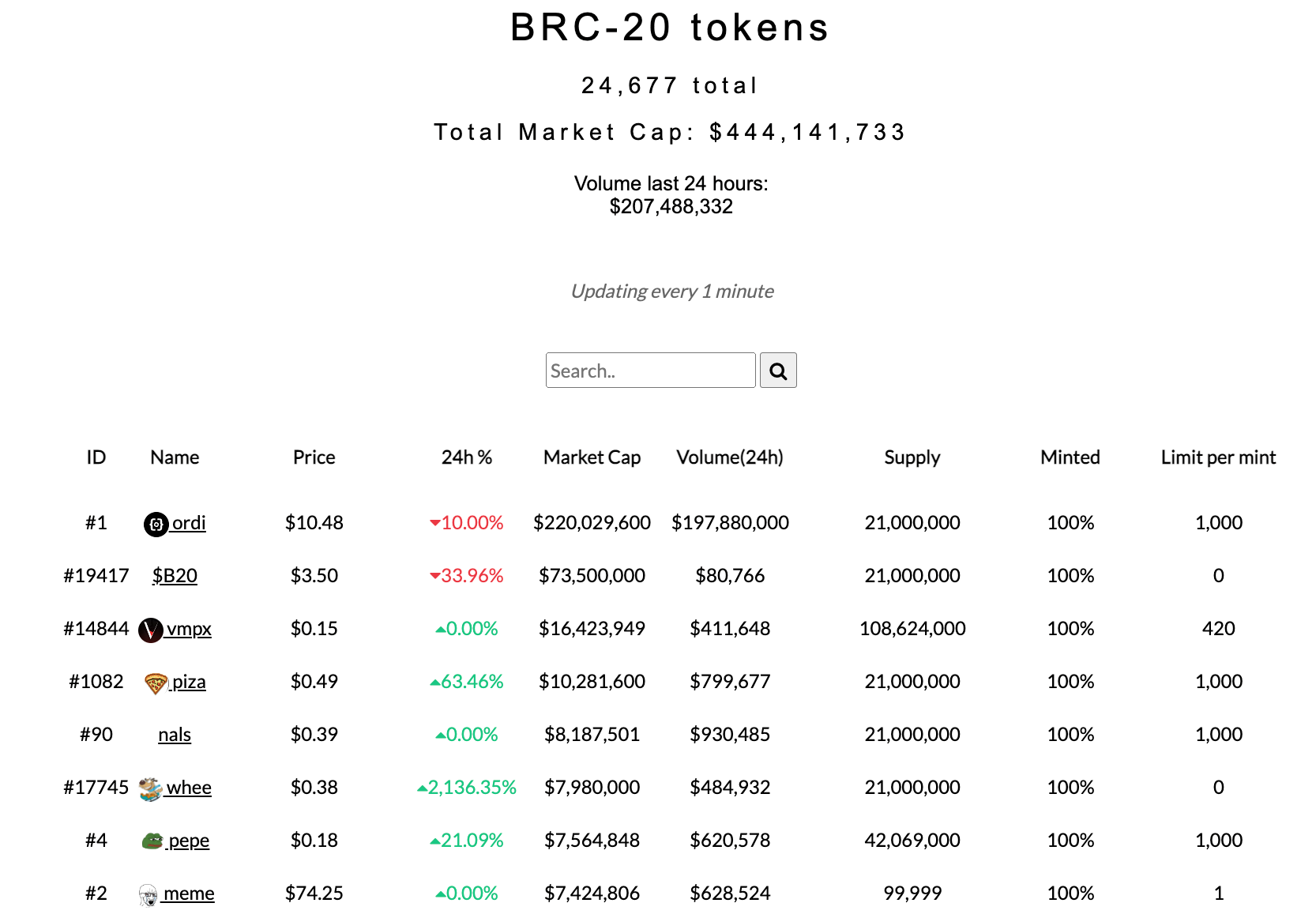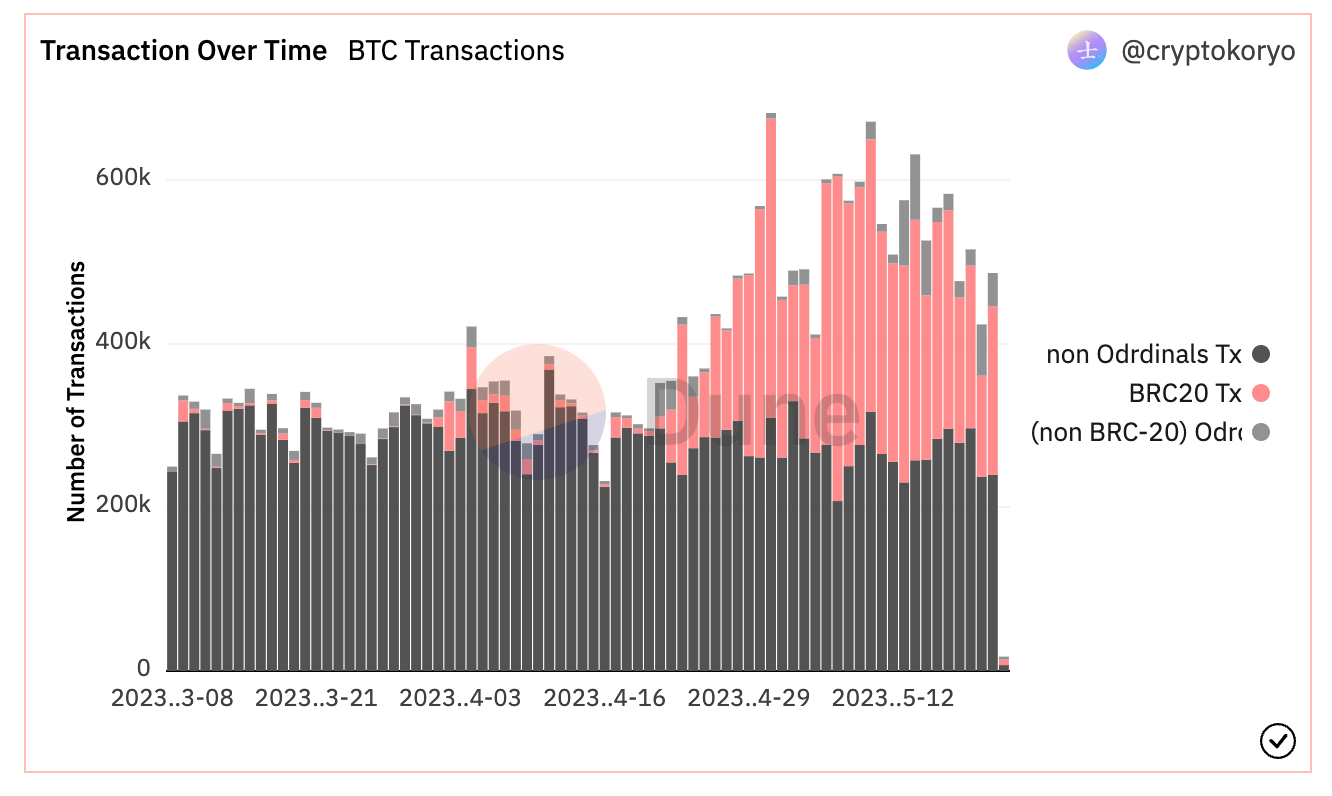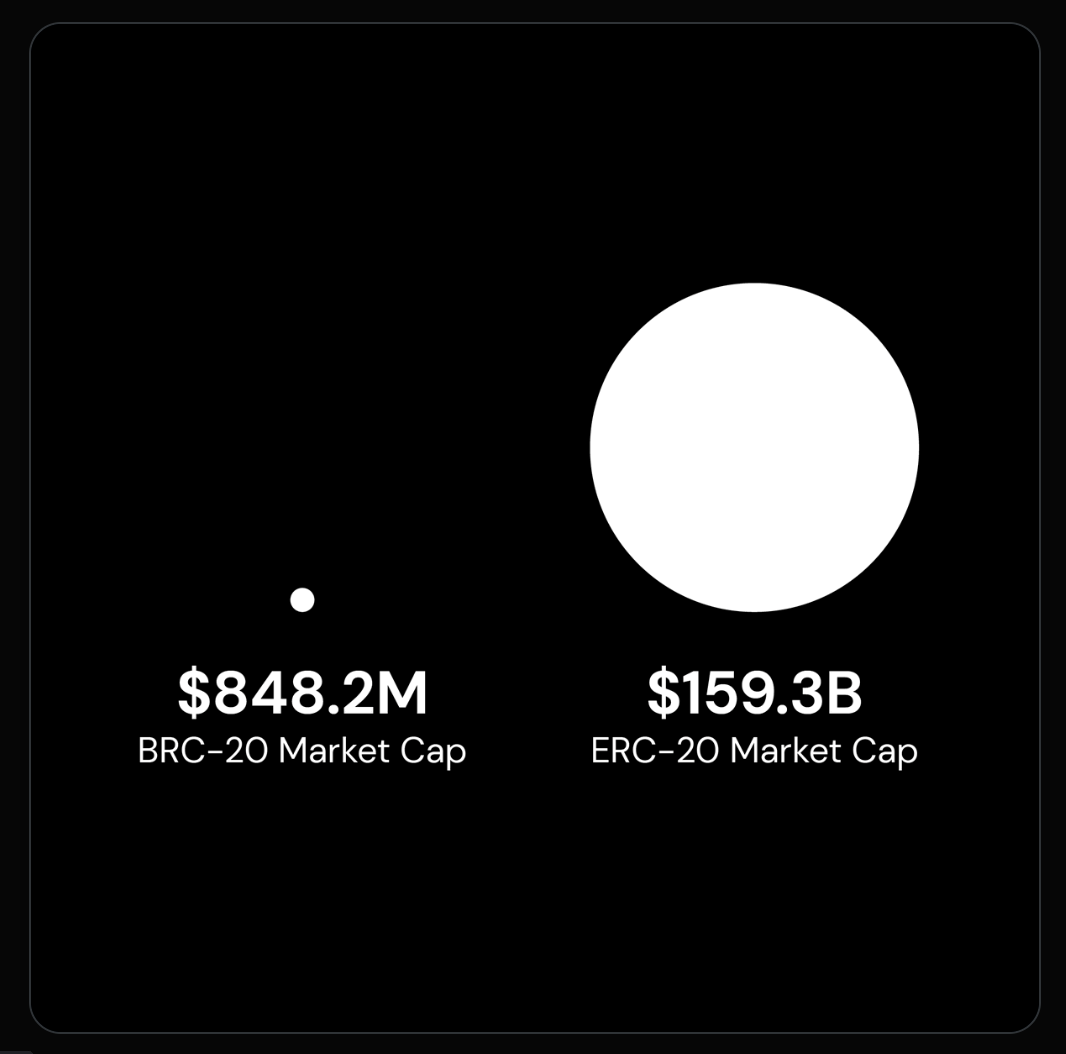first level title
1. The Birth of BRC-20
At the end of December 2022, Casey Rodamorr appeared in everyone's field of vision with the concept of Bitcoin Ordinals and Inscriptions (ordinal numbers and inscriptions).
First of all, a brief introduction to relevant knowledge. Bitcoin blocks are like pages of a shared ledger that records all BTC transactions. In 2021, the Bitcoin block size is limited to 1 megabyte. This limitation is to prevent spam attacks on the network. Two Bitcoin updates — SegWit in 2017 and Taproot in 2021 — increased the block size to 4 megabytes.
Suppose you want to create your own virtual currency on Bitcoin, you need two things: satoshi and a tag. A satoshis is the smallest fraction of a bitcoin, similar to how a cent is the smallest fraction of a dollar. Tags are additional data that can be attached to satoshis. Ordinals enable data to be inscribed in a single "satoshi" of Bitcoin. They use a logical ordering system called ordinal number theory to give each individual satoshi a unique number. Arbitrary data can then be inscribed in each individual satoshi. The data inscribed on satoshi can be images, video, audio, text, or even entire applications.
Ordinals enable the creation of NFTs that are completely native to Bitcoin, require no second-layer solutions, work without changing the Bitcoin protocol, and are backward compatible with the network.
March 9, 2023 Anonymous developer domo launches $ordi token with experimental standard protocol BRC-20. BRC, the abbreviation of Bitcoin Request for Comment in English, means Bitcoin Request for Comment Agreement in Chinese. It is worth noting that the BRC-20 standard does not use smart contracts like the popular token standard on the EVM blockchain. BRC-20 tokens embed JSON data into the serial number inscription, enabling users to deploy, mint and transfer tokens .

The first batch of created BRC-20 tokens $ordi tokens contains the following JSON data defining the name of the token with a limit of 1000 tokens per mint and a maximum of 21 million tokens:
first level title
2. What impact does the BRC-20 boom have on the Bitcoin ecosystem
secondary title

1. BRC-20 brings more benefits to Bitcoin miners
secondary title

2. BRC-20 causes severe congestion on the Bitcoin network
In the past month, due to the wealth effect of the $ordi token, a large number of users have been attracted to the Bitcoin network to trade BRC-20 tokens, resulting in severe congestion on the Bitcoin chain and a surge in Gas fees. On May 7th, Binance suspended bitcoin withdrawals twice within a day due to the huge number of withdrawal transactions and the surge in handling fees; on May 8th, the Bitcoin network stopped producing blocks for one hour due to congestion, and the gas fee for each transaction on the chain was the highest It hit $30, the highest level since May 2021.
The current increased interest in Ordinals and BRC-20 has resulted in high transaction fees and slow operation of the Bitcoin network. The Bitcoin network can be compared to a two-lane highway, with each car representing a transaction from point A to point B. Miners act as tollbooths, validating transactions and allowing them to pass, with transaction fees similar to the prices drivers pay through tollbooths. Ordinals NFT and BRC-20 tokens are like trucks carrying digital items, taking up more space on highways and toll booths. A large number of trucks (NFTs and tokens) can lead to congestion and saturation of the Bitcoin network, and congestion leads to longer wait times for processing transactions. Some users are willing to pay more for priority processing, increasing the overall transaction fee for everyone.
secondary title
3. Bitcoin’s second-layer network narrative returns to people’s vision
BRC-20 does help Bitcoin to achieve ecological expansion. The consensus of many people in the entire encryption world will return to Bitcoin itself, but from a practical point of view, BRC-20 has no actual value at present. Write a number on the paper and say it's a check. BRC-20 does not have smart contracts and uses inscriptions as ledgers, but it is difficult to produce an efficient and stable system with immutable ledgers. And it takes up very precious resources on the Bitcoin chain, including paying a certain amount of Satoshi as a miner's fee and the time spent waiting for transaction confirmation. Because it is very unstable, it is easy to cause problems in the transaction, and even shortly after UniSat launched the BRC-20 trading market, the market was suspended due to attacks. The upsurge of BRC-20 and Ordinals NFT once led to serious congestion on the Bitcoin chain. "How to solve the congestion on the chain and reduce Gas fees" has become an urgent problem to be solved in the current ecological development of Bitcoin.
Therefore, the narrative of Bitcoin's second-tier network has once again returned to people's vision:
1. Lightning Network: One of the earliest L2 solutions for Bitcoin
Mainly used in Bitcoin payment scenarios, Lightning Network can help users save costs and improve efficiency. The core idea is to place user transactions off-chain, and only the final transaction results are confirmed on the Bitcoin main network chain, thereby improving the transaction efficiency of the Bitcoin network and allowing users to trade at a lower cost and faster. Complete the payment.
2. RGB protocol: an infrastructure that provides smart contract support for the Bitcoin network
The RGB protocol is a Bitcoin-based color currency protocol that allows users to create and exchange different types of digital assets by extending the Bitcoin protocol without affecting transactions on the main chain. It is equivalent to a set of scalable smart contract system with privacy features. Developed by the LNP/BP Association, it is mainly used to support the smart contract deployment of Bitcoin and Lightning Network. Support developers to create, deploy and execute smart contracts on Bitcoin or Lightning Network, while maintaining the security of their data. Through the RGB protocol, developers can deploy tokens, NFT asset issuance contracts, decentralized financial applications (DEX, lending), DAO, etc. on Bitcoin. The protocol promises to support and be compatible with complex smart contracts running on Bitcoin and the Lightning Network.
3. Layer 2 side chain solution
first level title
3. When the tide goes out, where will BRC-20 go?
First of all, in the current market environment, the story of Ethereum NFT seems no longer fresh, and the NFT of the BTC ecology seems to have given investors a stimulant, like fanatical gold diggers, greedily exploiting the growth of the BTC ecology A vast wasteland. In particular, it is an indisputable fact that many ETH holders and NFT players are quickly turning their attention to BRC-20. But a problem that cannot be ignored is that the prosperity of BRC is mainly driven by old players in the NFT stock market. The group of "gamblers" wagered more than $500,000 on a picture of a monkey during the last bull market. Just imagine, wherever this group of people go, we will see the liquidity and wealth effect emerging from this ecosystem. For a few, it looks like a fate-changing opportunity, but for most, it looks like a typical Ponzi scheme. As ordinary investors, we need to pay special attention to the risks in this BRC boom.

But what we can see from this graph is that even taking the hype and FOMO into account, we are nowhere near the true potential of this new economy. At least compared to the ERC-20 market size on Ethereum, BRC-20 is still a baby. Although BRC-20 has existed for a while, there may be many problems and no practical value at present, but if more Builders pay attention to this track, then I believe that BRC-20 may be used for many other things in the near future, For example tokens for dApps that will be built on BTC.
Although we do not encourage FOMO for this kind of worthless hype, we can see that the ecology has gradually developed from the initial off-exchange order book transactions to supporting facilities such as NFT wallets, secondary trading markets, and NFT issuance tools. Although many infrastructures are immature, it is not difficult to see that the entire encryption market has positive expectations for the future of the BTC ecosystem.
Disclaimer: There are risks in the market, and investment needs to be cautious. Readers are requested to strictly abide by local laws and regulations when considering any opinions, viewpoints or conclusions in this article. The above content does not constitute any investment advice.
References:
https://blog.chain.link/brc-20-token/
https://dune.com/cryptokoryo/brc 20
https://domo-2.gitbook.io/brc-20-experiment/
https://brc-20.io/market
https://unisat.io/
Copyright statement: If you need to reprint, please add the assistant WeChat to communicate. If you reprint or wash the manuscript without permission, we will reserve the right to pursue legal responsibility.
Disclaimer: There are risks in the market, and investment needs to be cautious. Readers are requested to strictly abide by local laws and regulations when considering any opinions, viewpoints or conclusions in this article. The above content does not constitute any investment advice.